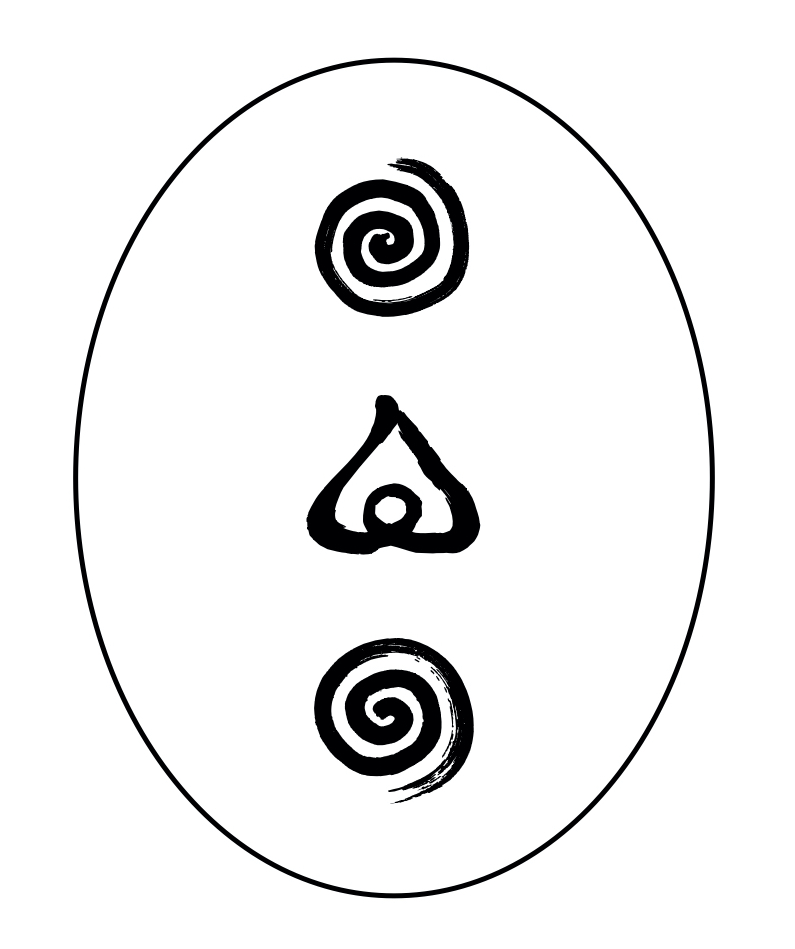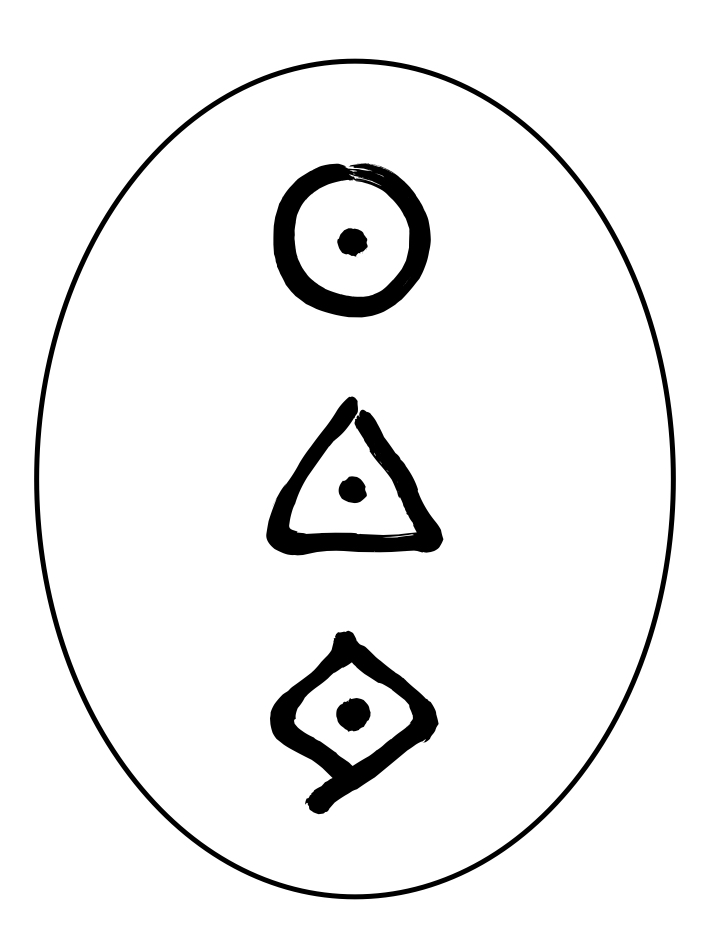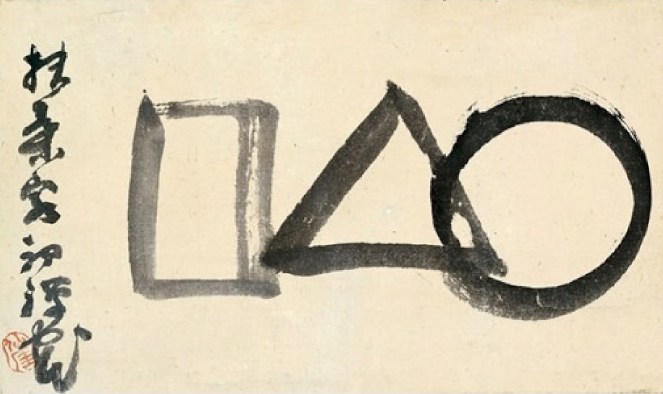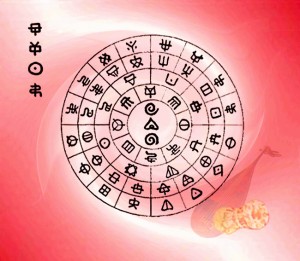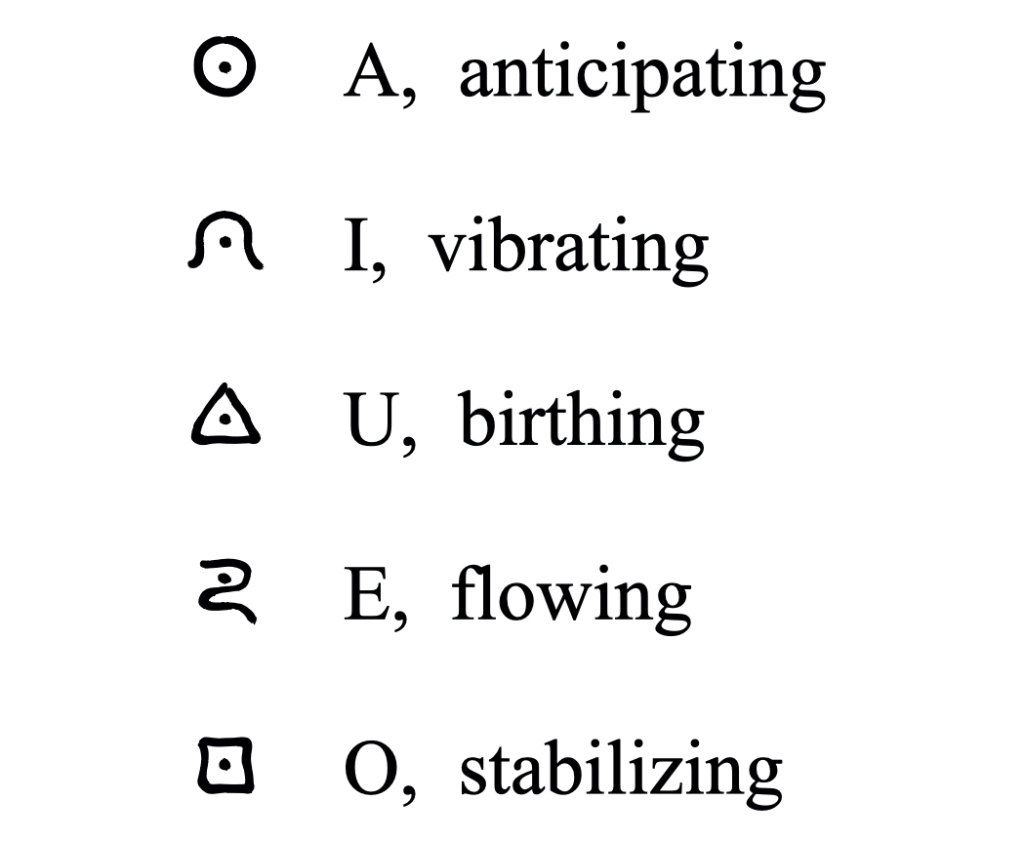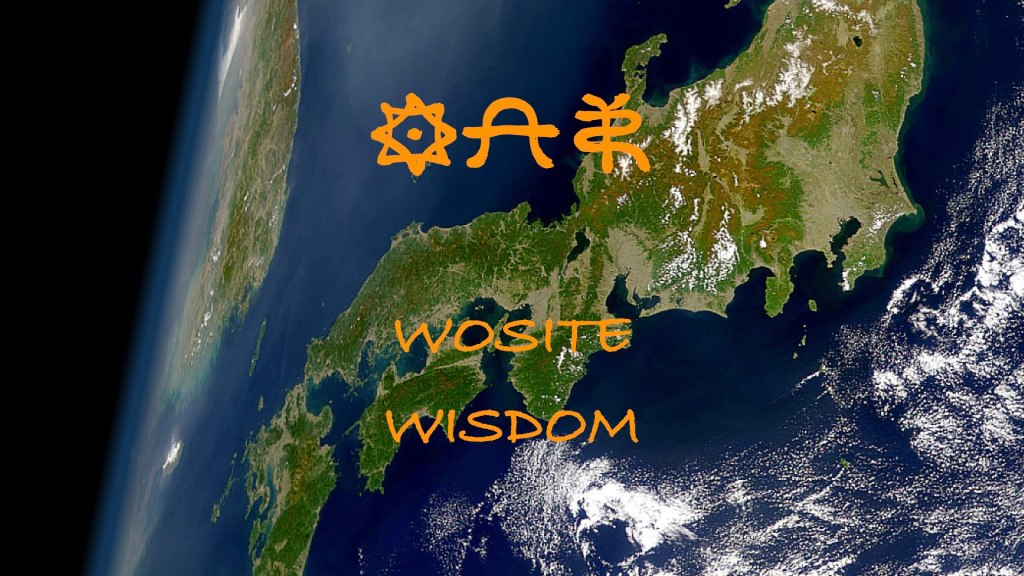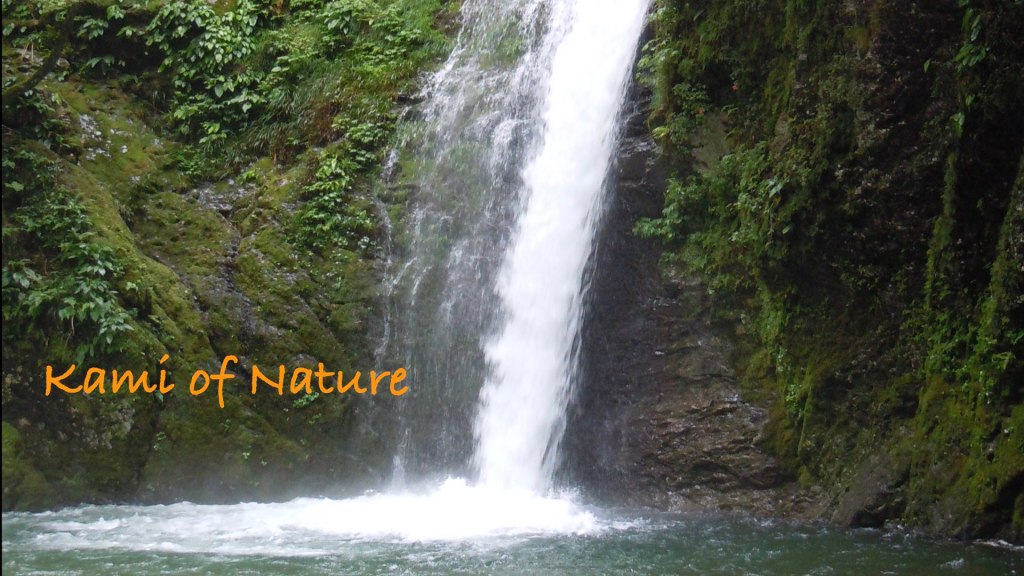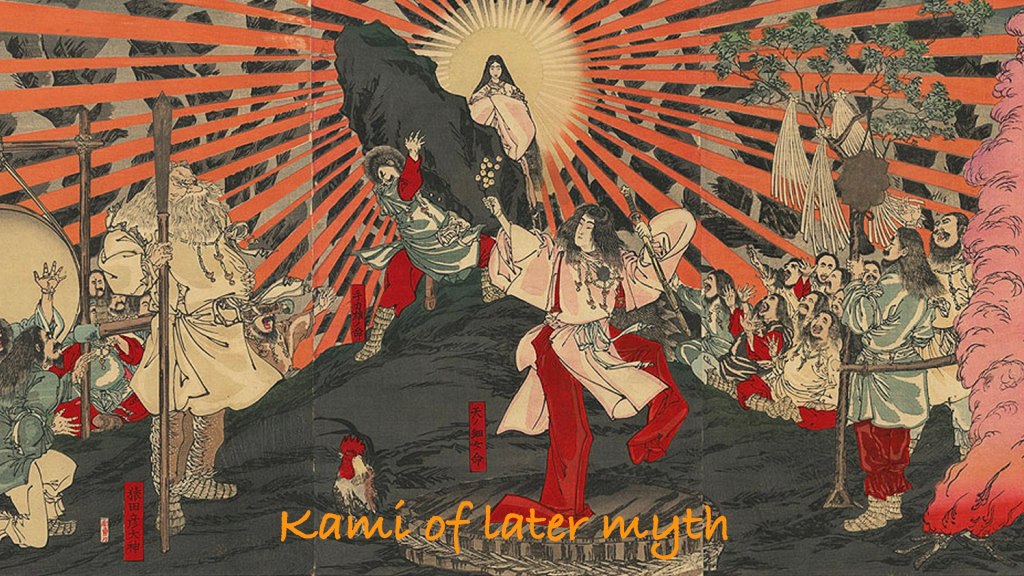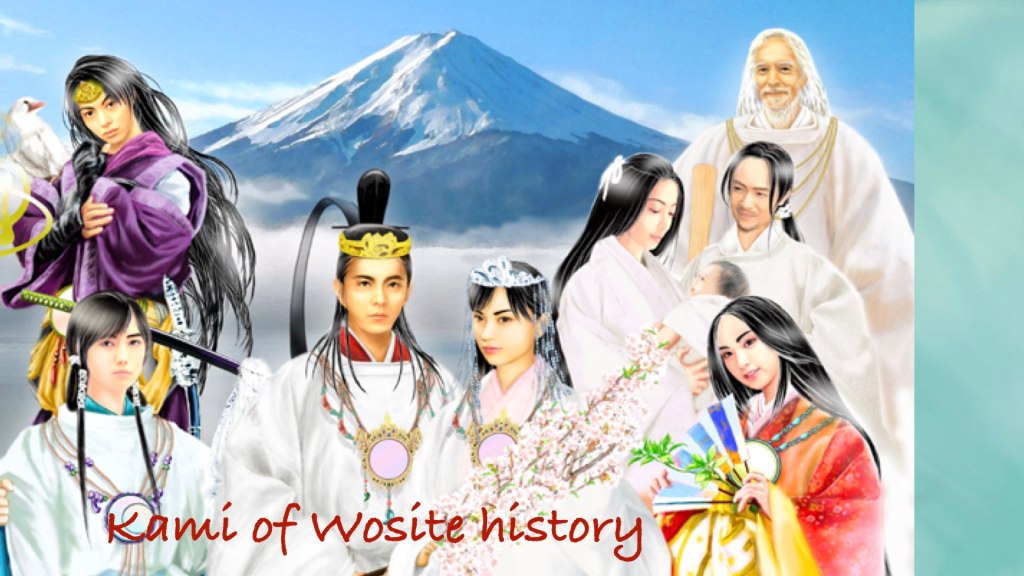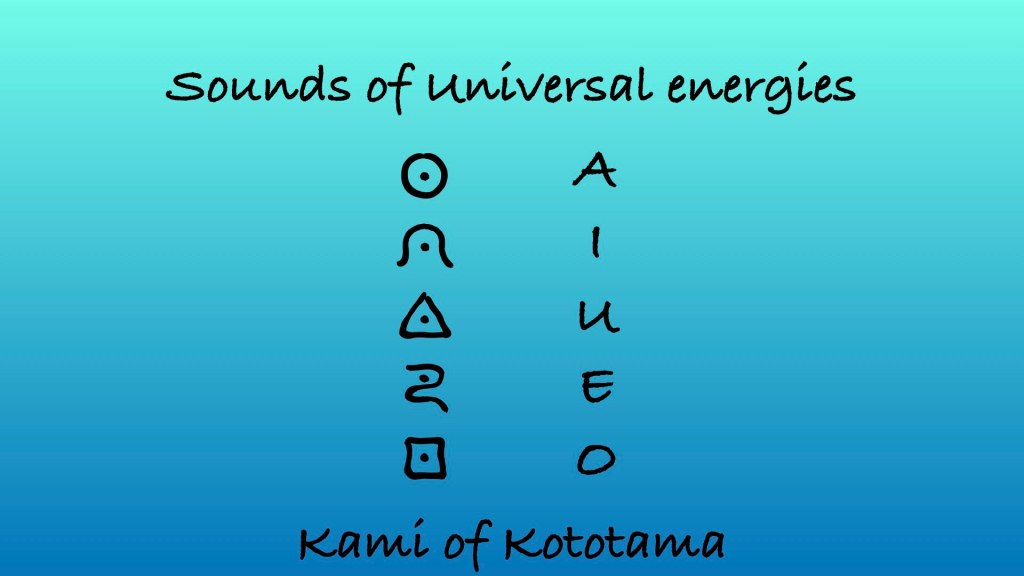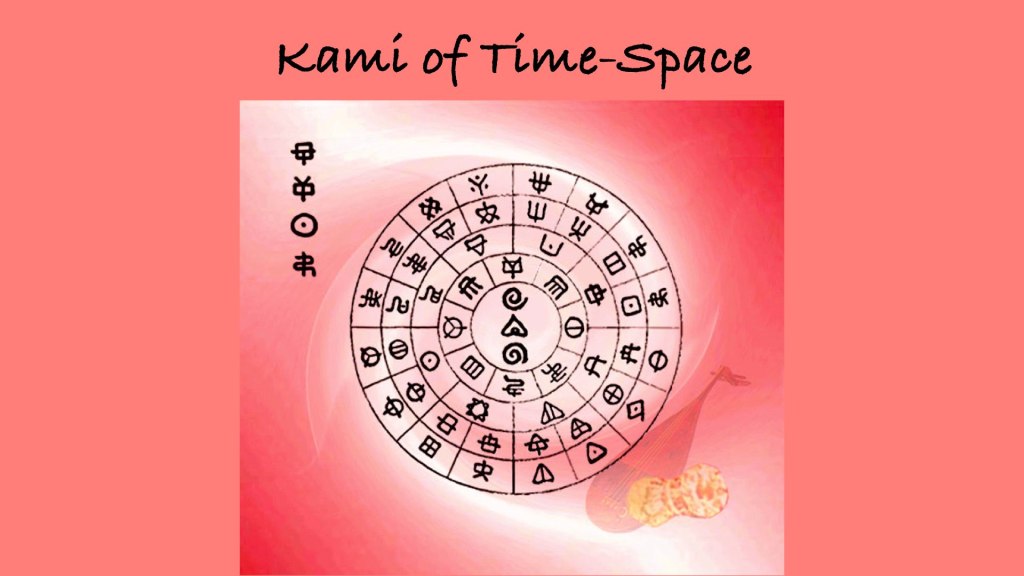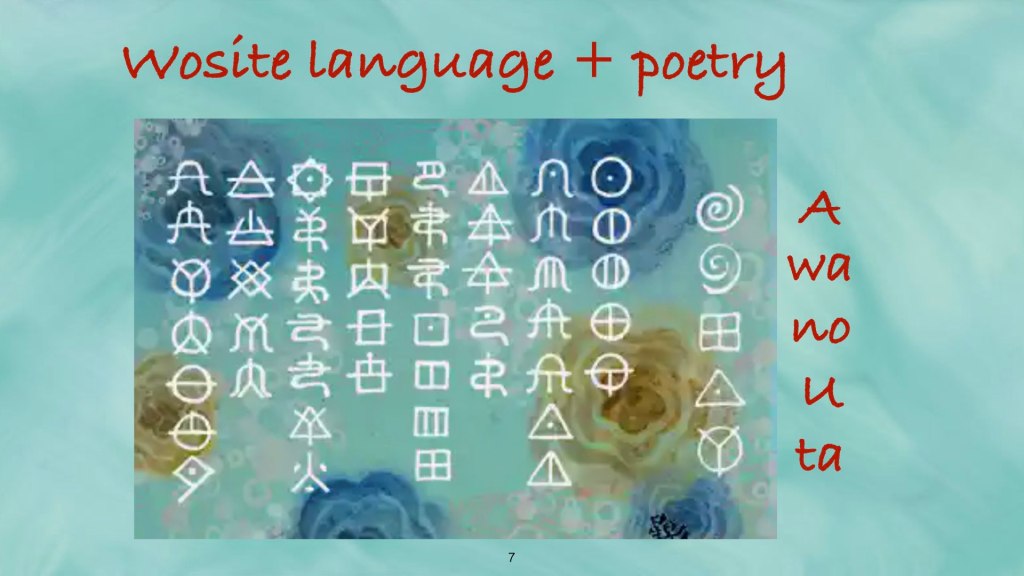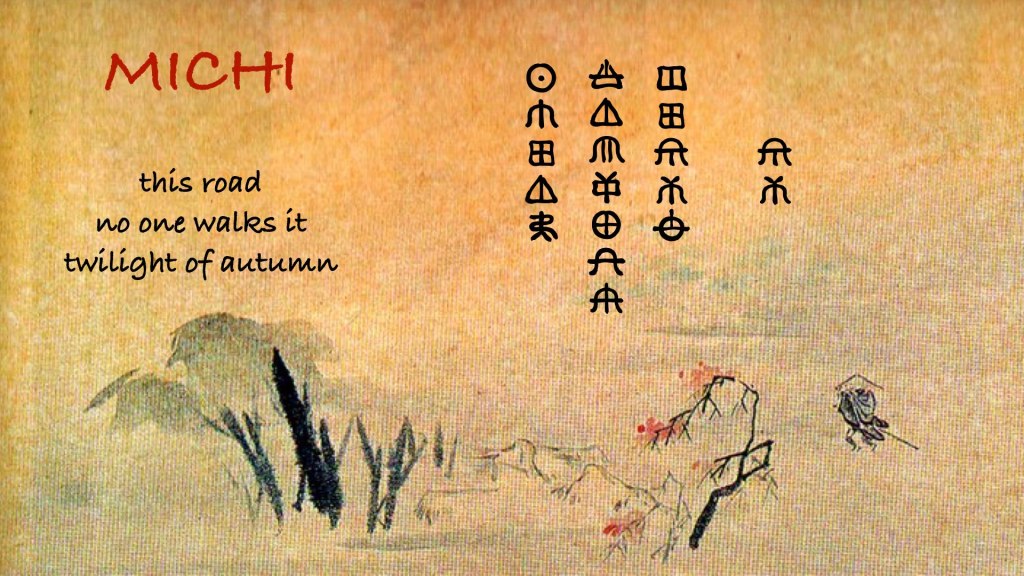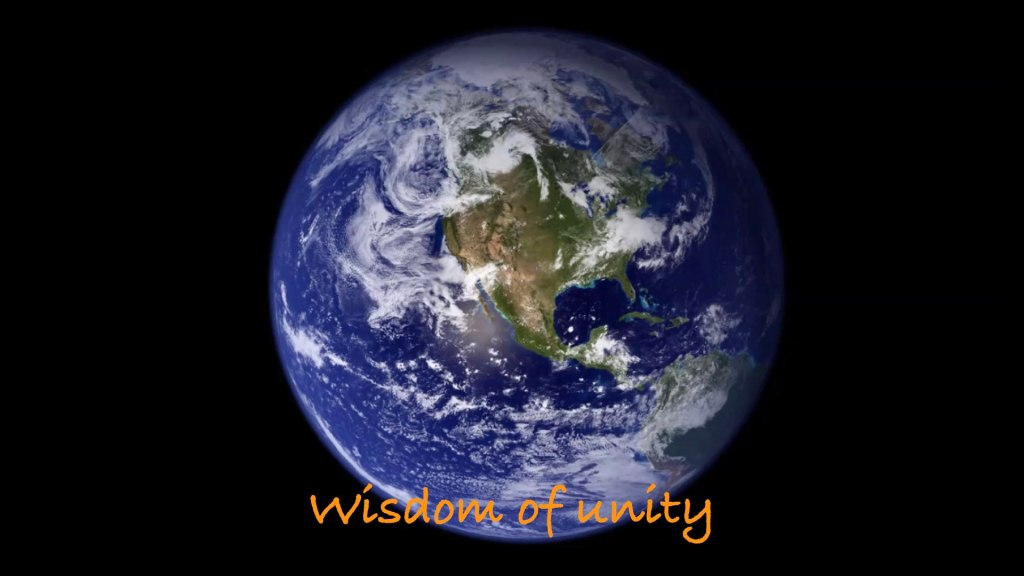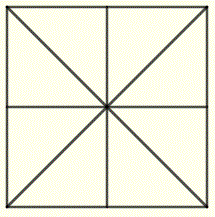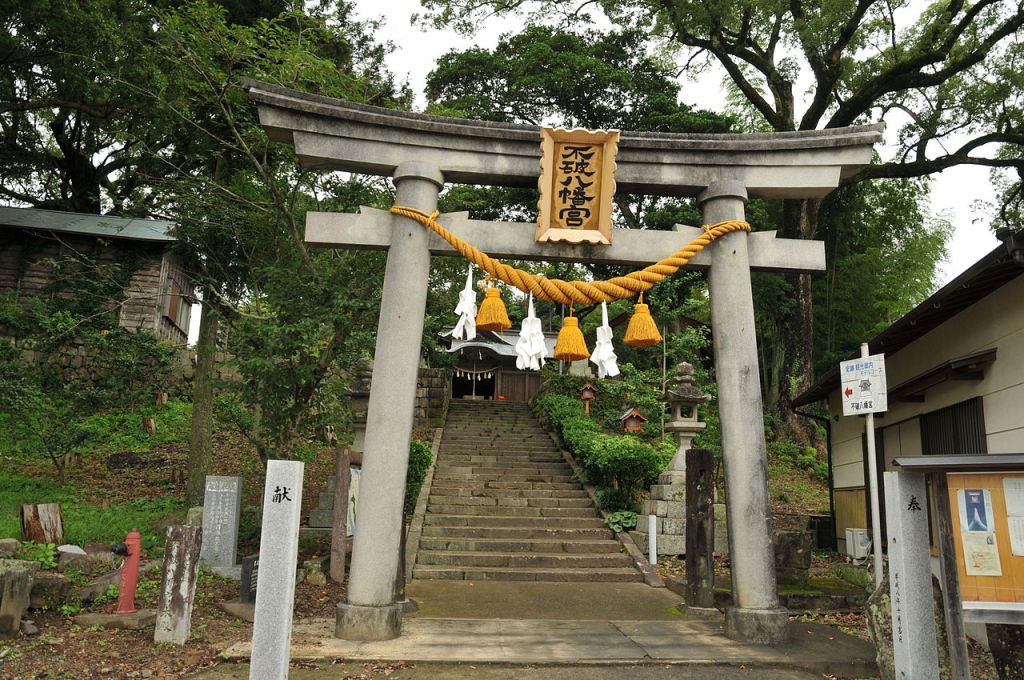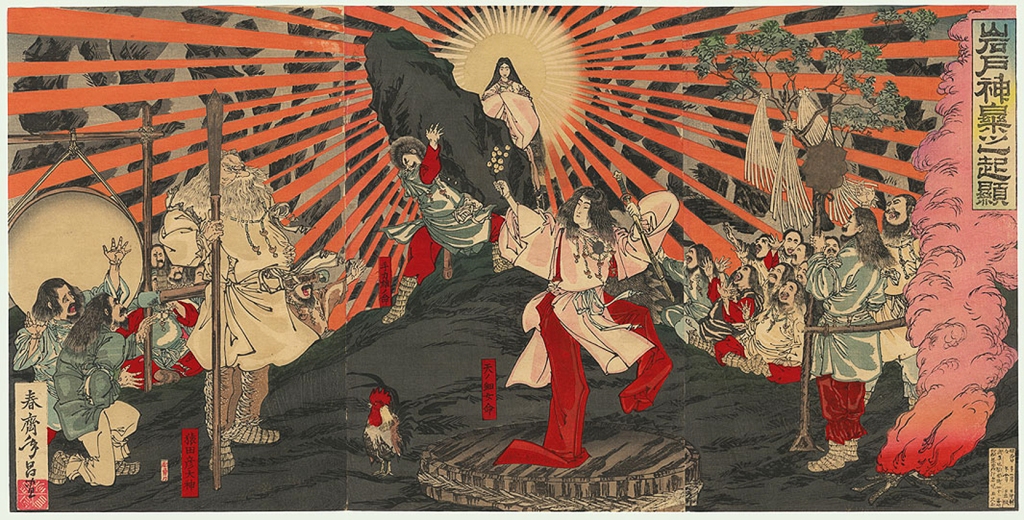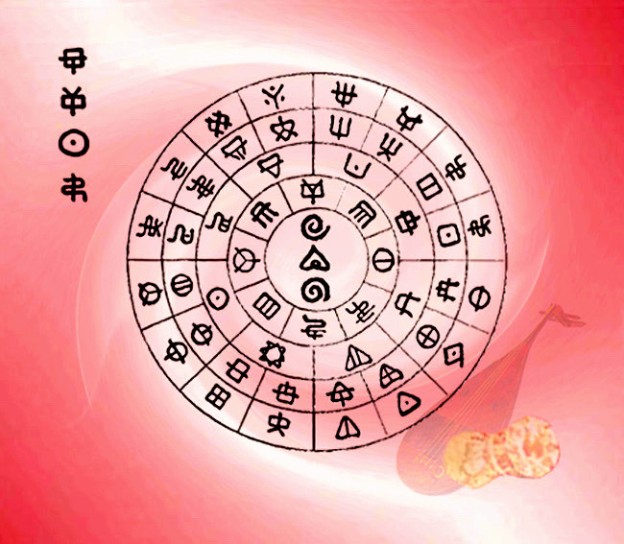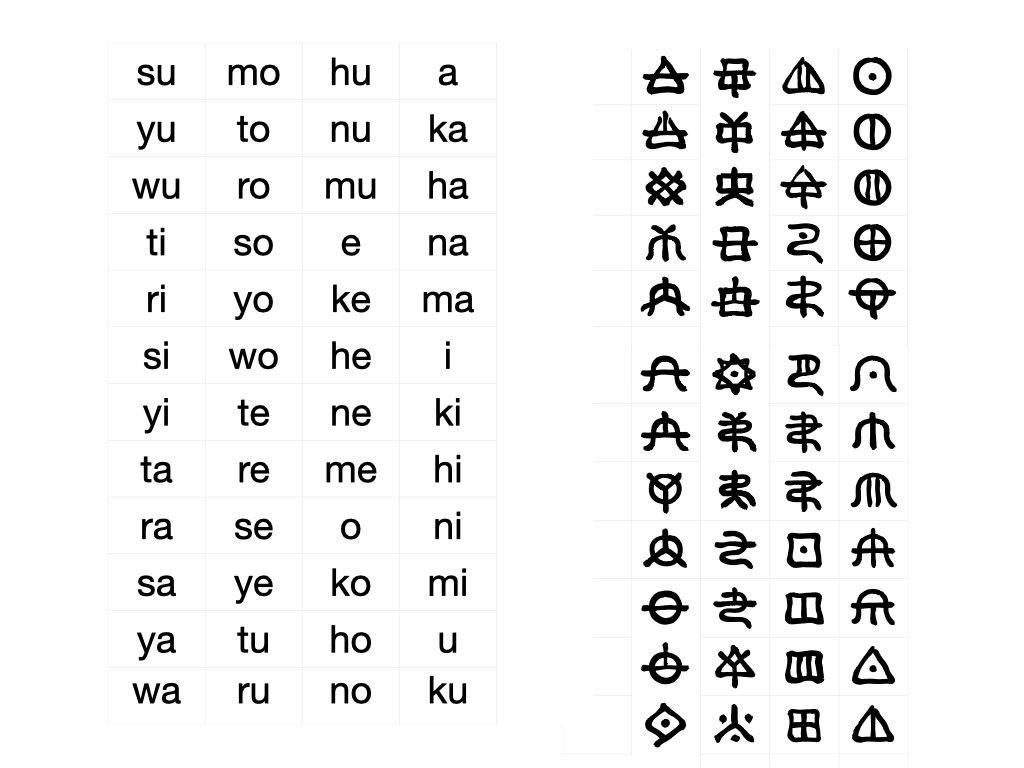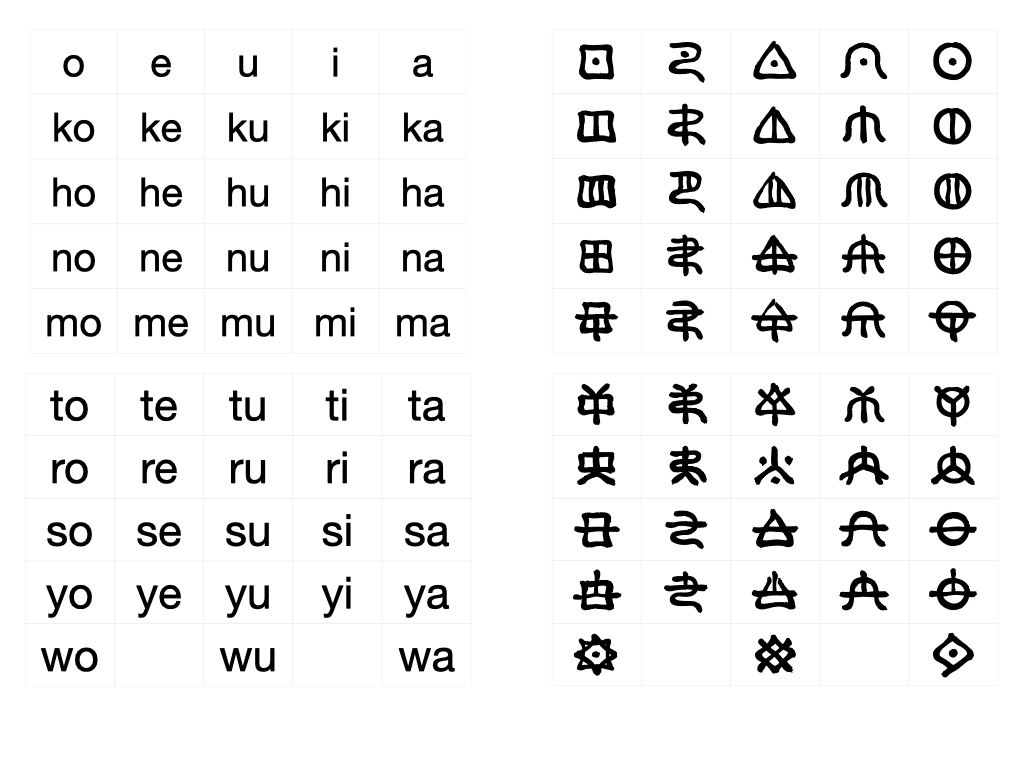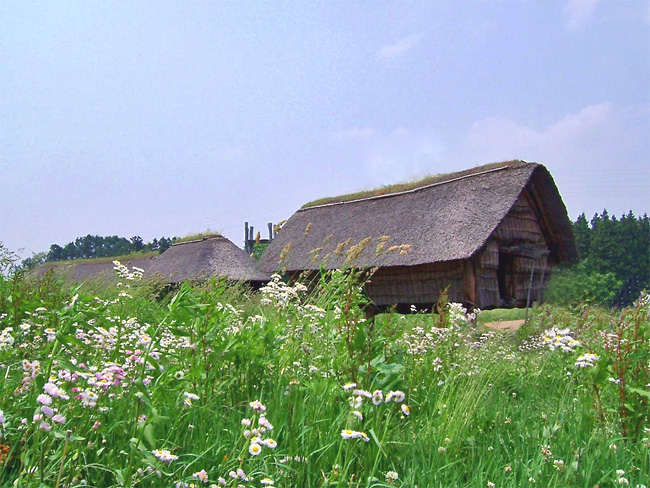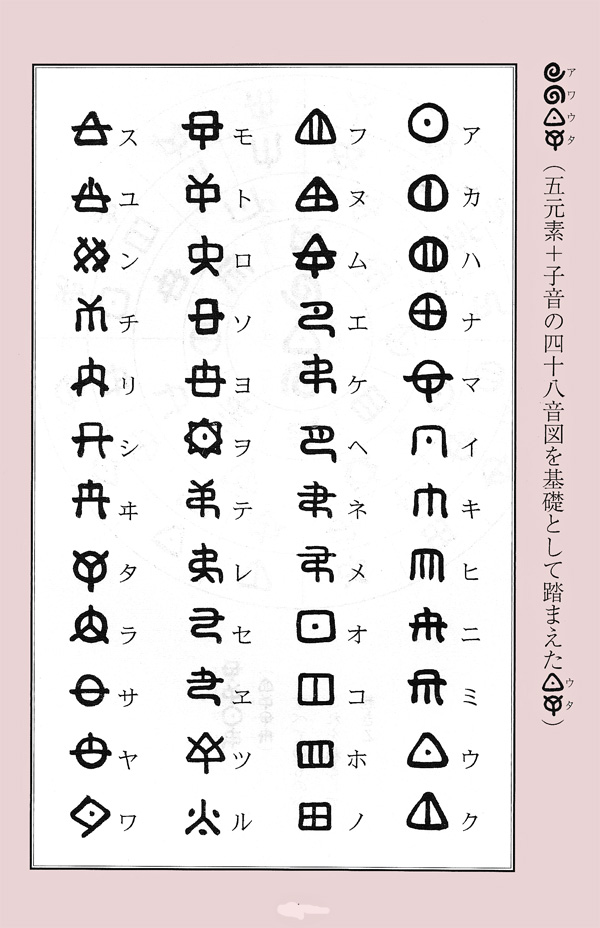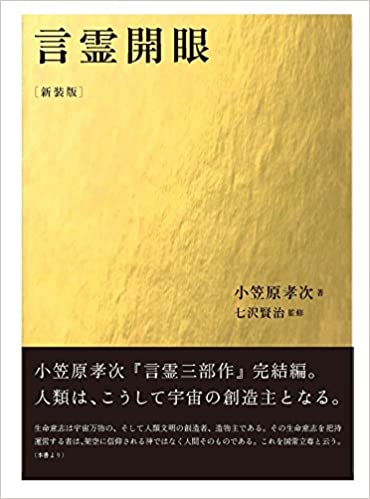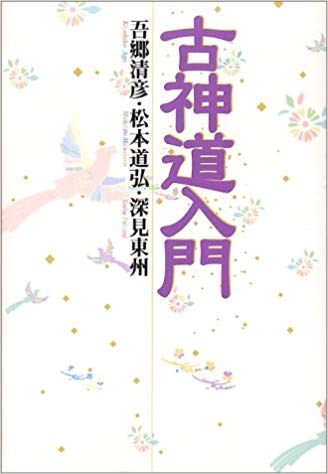Essay on the Awa Universe
This essay follows upon decades of contemplation on the nature of reality. Our background in physics and quantum mechanics together with research into Wosite and other world cosmologies have enabled us to form a coherent picture of Universe. We discuss the Wosite universe of Awa as we understand it, based on the teachings of Toyoke Kami and his Motoake cosmology chart. We present the Wosite cosmology in light of the modern thinking of quantum physics.
Awa Universe
Awa means Universe. The syllable A stands for Ama, the Unseen. The syllable Wa stands for Seen, as the physical dimension of Earth. Although our human minds like to categorize concepts to make them more understandable, there is really no separation between Unseen and Seen. You may see translations of ancient literature which speak of Heaven and Earth which are roughly equivalent to Unseen and Seen. We avoid terms which are loaded with religion. Wosite is not a religion. It is a philosophy, a cosmology, and a worldview.
Auwa and Amemiwoya
Auwa (A-u-wa) is a word that represents Amemiwoya, the Great Source of Awa universe.Here are two ways to write the three syllables of Auwa.
The first uses special forms of Wosite characters, the spirals denoting the sacred nature of A and Wa. The second is Auwa written in the usual Wosite characters. The spiral A represents Ama, the sacred Unseen. The spiral Wa represents the Seen, the physical world; it is sometimes called simply Earth. The fancy U is umu, to give birth. Awa is the entirety of the universe in its Unseen and Seen aspects.
A third way is to represent Auwa as geometric shapes. You may remember the famous brush work of Sengai dubbed Circle, Triangle, Square representing Universe. Note the correspondence between geometry and writing: the circle of A, the square of Wa, and the triangle of U.
Auwa is Amemiwoya
The spiral way of writing Auwa refers to Amemiwoya, Great Parent, Source of All. In Wosite cosmology, Universe is both Unseen and Seen. We humans live in the Seen three-dimensional world of space and a dimension of time, and we hold a conventional view that the world is made of measurable matter and energy. However Universe is more, for it has an Unseen aspect. The Unseen may be likened to unmeasurable energy. The Unseen is equivalent to physicist David Bohm’s implicit order and the Seen to explicit order which form the wholeness of his cosmology.
To-no-Wosite Philosophy and Physics
To-no-Wosite is the teaching of Wosite philosophy. The world of the Seen comes from the Unseen. This is equivalent to the Source being called Emptiness by Buddhists, and the Quantum Void or Quantum Plenum by physicists. There is no separation between science and spirituality in Wosite or in true reality.
Yet, in the Wosite civilization, there is indeed scientific knowledge of the physical world. The water cycle was well known. There were calendars for different purposes. The people of Wosite had a solar calendar which was much more accurate than the Gregorian calendar and is still operating today in the mountains of Central Japan.
Motoake Mandala of Generation
The two halves of the word Motoake each means origin. Motoake refers to the origin of the world, of Universe. It is summarized by Auwa as we have discussed above. Motoake is further explained through a mandala chart designed by Toyoke Kami, the great teacher of the late Jōmon period. It may seem that the chart is in two dimensions, but it truly represents three or more dimensions. It represents vibrational energy emanating into all directions of space.
The above is the Toyoke mandala of Motoake, as rendered by our teacher Sakata Shoko.
Simplified Motoake Manadala
Our color-coded set of concentric circles is a simplified version of Toyoke’s chart. It depicts three types of energies that are processes and actions of generation from the subtlest Unseen to the densest Seen. It consists of the central circle of Amemiwoya (blue). Concentric rings surround Amemiwoya. The first ring (green) contains the energies of time and space. The next (orange) is the ring of Kototama energies, vibrations which begin to manifest the physical human. The outer ring (pink) contains the energies to complete manifestation of the physical world of nature and biological creatures. There are 48 generative energies which are represented by 48 named kami. These are the energies of Wosite syllables. Details can be found in our other writings on the Motoake chart and Wosite language.
The Universe of Unseen and Seen is constantly active. There is a continuum from Unseen to Seen, from spirit to matter. This means that matter is not different from spirit. Spirit is sacred; matter is sacred.
Nonduality, Polarity, and Dyadic
Although in our diagram of Auwa, we show A and Wa as separate dimensions of reality, there is no separation, no intrinsic difference between the two. Remember: All is One, Two are One. It is merely that A is one end of a spectrum of polarity and Wa is at the other; this is how we explain it in words.
Why is it necessary to explain this? We ordinary humans are spiritual souls incarnated in physical bodies. We are here experiencing life in the material world. The soul lowers its high frequency of the spirit dimension as it enters physical life. We forget our true nature, what we really are. We need to be reminded so that we can make the most of our experience before we return to spirit.
As we experience life, we often find that the two polarities are intertwined. While most of the time we live in a physical world, we catch glimpses of the other. When we experience this vividly, we may call it an epiphany. It is a time of close connection with the All of Universe, our Source. Apollo astronaut Edgar Mitchell calls intertwined polarities “dyad” in his dyadic model of reality formulated after he experienced such an epiphany when returning from the moon.
Unity Worldview of Wosite Miti
In Wosite philosophy, all in Universe is sacred. All in Universe is connected. This is a worldview of unity. The worldview is a Miti (also spelled Michi), a Way of living a conscious life. It is based on the principle that all in Universe — people, animal, plants, minerals — come from one Source and are connected to each other. This connection is called in Wosite musuhi. The modern word is musubi.
As long as the people of ancient times walked this Way and followed this philosophy of unity, they did not engage in warfare. The Jōmon period is noted for 10,000 years of non-violence. Unfortunately, this long period of peace came to an end. Can we modern people observe this Way? Can we, too, live without violence?
Hito Iki, First Breath
How does Universe begin? In our urban myth, Universe is said to have begun in a Big Bang. Some are calling it the Big Breath, when Universe breathes into existence. Hito Iki is the Wosite descriptive term for the origin of Universe. Hito Iki means First Breath. Yet, nowhere does it say that this First Breath took place once long ago. Rather Universe is always breathing its First Breath, constantly revitalizing life and intelligence.
Ki, Cosmic Energy
It has been known for a long time in Japan that the lifeforce called Ki flows in human bodies and everywhere in nature. This Ki is none other than the Wosite Iki. The Iki of the cosmic First Breath.
Kototama of Wosite Language
Kototama is the practice and the theory of sacred sounds of Universe. Kototama sounds carry the lifeforce Ki. How does Kototama appear in Motoake cosmology? Think of sounds reverberating through the rings of the Motoake Mandala, from center outward. There are five vowels which are the mother sounds of all the 48 syllables of the Wosite language. These vowels are the five generative cosmic energies A I U E O. They represent perform the following functions, therefore they are not “things” but processes.
There are nine other cosmic energies called consonants. They are: K, H, N, M, T, R, S, Y, W. They combine with mother sounds, consonant always before vowel, and generate child sounds called syllables. Thus human speech of syllables represents generation of Universe, and we are generating Universe as we speak kototama. We are supporting life.
We are Consciousness
What is the glue that makes possible the unity of Auwa from the polarity of spirit and matter? The glue is consciousness. The true reality of Universe is consciousness. Each of us is an individuated consciousness of Universal Consciousness. We are like waves of the sea. We living beings are consciousness through which we experience the physical world. A green leaf is green not because our eyes sense green photons. Photons do not come in colors! What we call green comes from our agreement to label the experience of certain frequencies of electromagnetic radiation as “green.” In such a way, we have built our notions of what the physical world is like. And yet, that model of the world does not even exist. Only consciousness exists throughout Universe.
Quantum mechanics has in the last century revolutionized modern physics. Today’s science is remarkably similar to ultra-ancient science, both agreeing that “Consciousness is primary.”
The materialistic model that we have held until now has led us to the depths of exploitation of nature and environment to meet perceived human needs. To reverse this dive into our near extinction, we must revise our worldview into one of unity rather than duality, of consciousness rather than matter. We must act regeneratively, fostering life and well-being for all in Universe, by knowing not only who we are but what we are.
We are consciousness.
***

